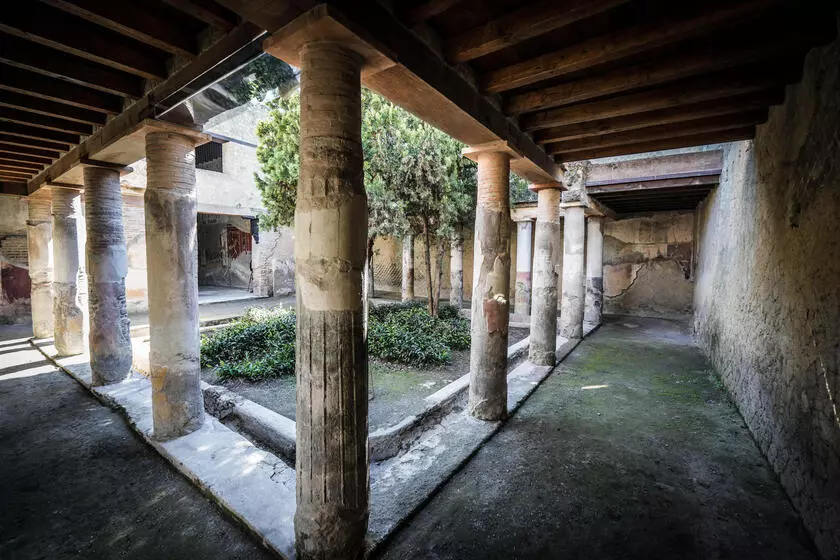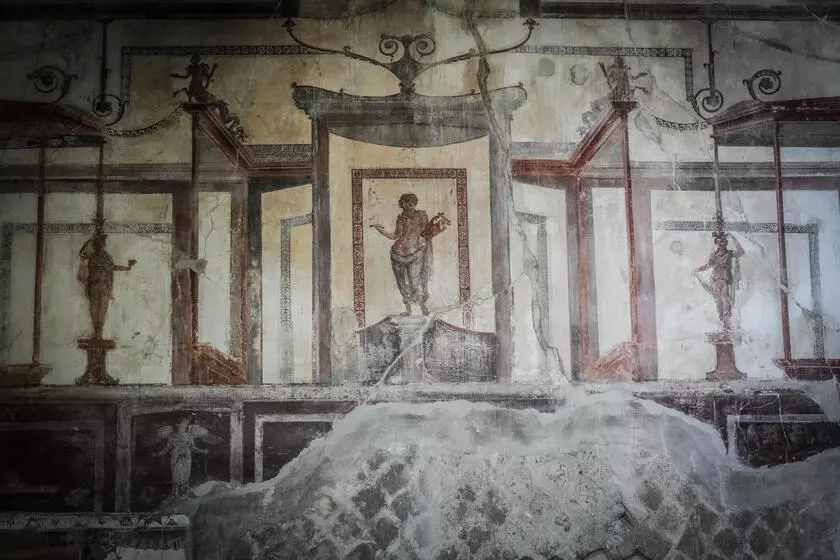After careful restoration, two of the most beautiful residences reopen in the ancient city of Herculaneum: the Domus del Colonnato Tuscanico and the Domus del Sacello di Legno that had been closed to visitors for more than 25 years. The restoration performed with the use of state-of-the-art digital tools was made possible through the collaboration of the Herculaneum Archaeological Park with the U.S.-based Packard Humanities Institute, a nonprofit foundation founded in 1987 and based in Los Altos, California. Indeed, the Packard’s main mission is to fund projects related to the preservation of historical assets in the fields of archaeology, epigraphy, music and film.
The domus are two of Herculaneum’s best-preserved residences, the decorations inside them hold frescoes depicting themes related to the culture of their time, particularly references to mythology and the daily life that took place in the city. The Domus del Colonnato Tuscanico is decorated inside with a fresco depicting the sacrifice made by Hercules to found the city that bears his name, while the Domus del Sacello di Legno owes its name to the statuette of the same hero found in the Larario, that is, a space dedicated to the domestic worship of the family’s patron deities, the “Lari”. The current restoration has made it possible to consolidate the architectural structures, giving visitors the opportunity to visit the spaces as they were used and experienced in daily life in Roman times.

As Culture Minister Alessandro Giuli pointed out, “the reopening of these ancient dwellings marks the completion of the first phase of the larger Domus Project, which includes the conservative restoration of six domus resulting from the joint work between the Herculaneum Archaeological Park and Packard.” The collaboration will continue, with an investment of about 45 million euros, thanks to which archaeological excavations at the site can be resumed and new technologies can be employed for research and enjoyment of the heritage, including the development of repositories and workshops.
Giuli also announced that the collaboration includes urban interventions such as the redevelopment of a neighborhood bordering the excavations. In addition, with the reopening, the site and domus will be more easily accessible for visits, thanks in part to the Herculaneum Digital App, which takes advantage of Wi-Fi and Li-Fi connections to provide visitors with geolocated multimedia content, with the aim of better personalizing their experience.












